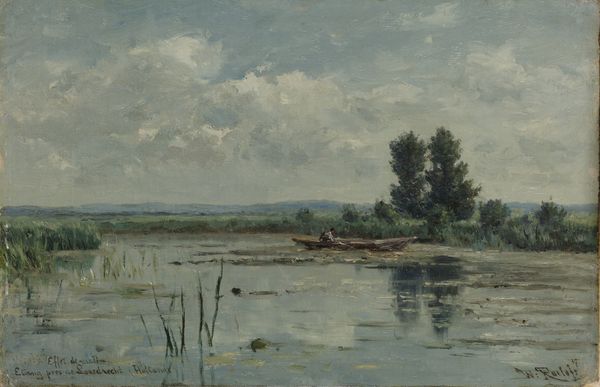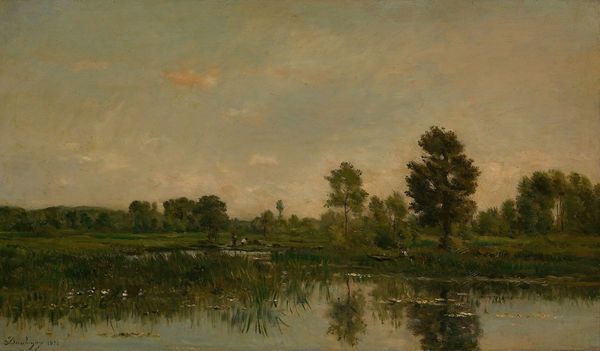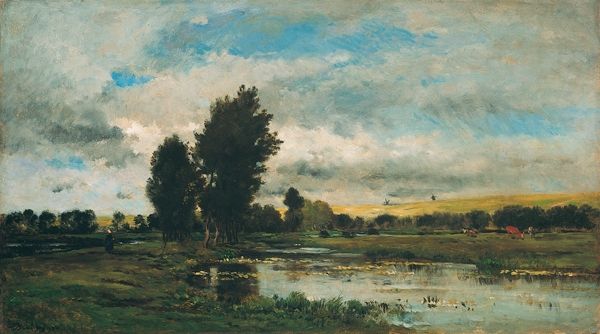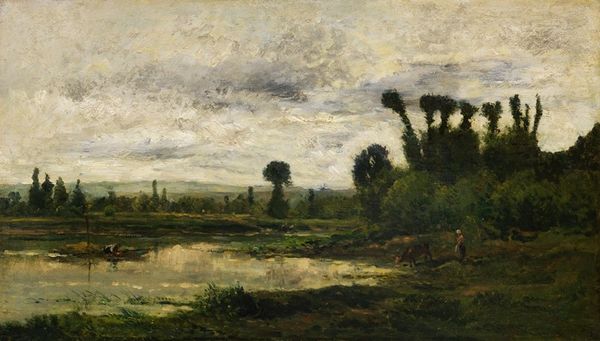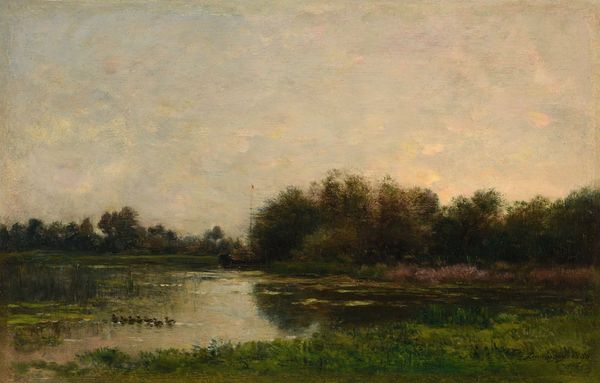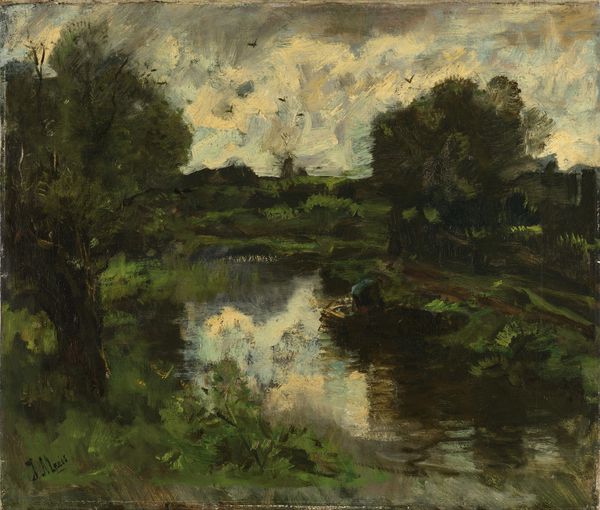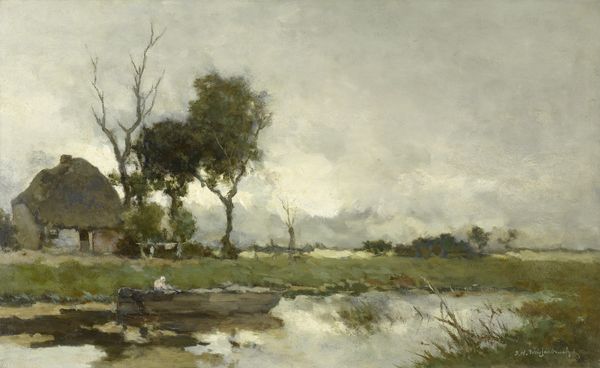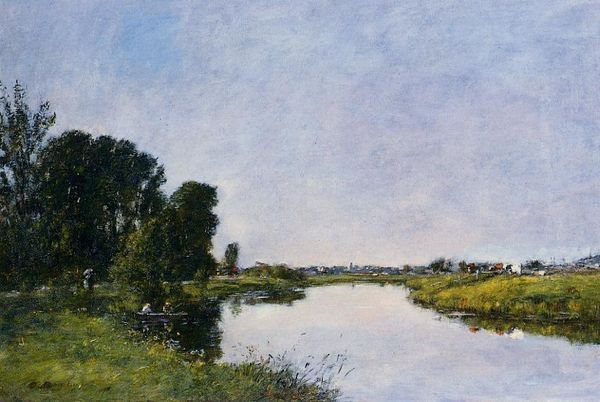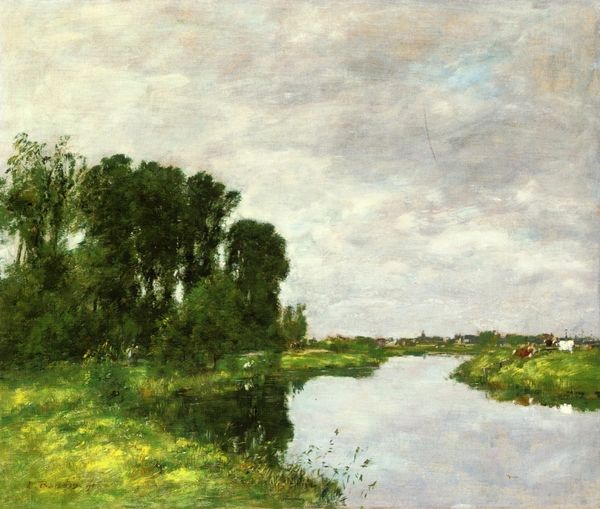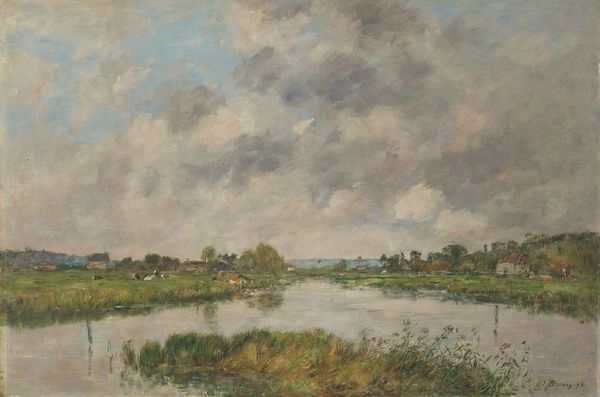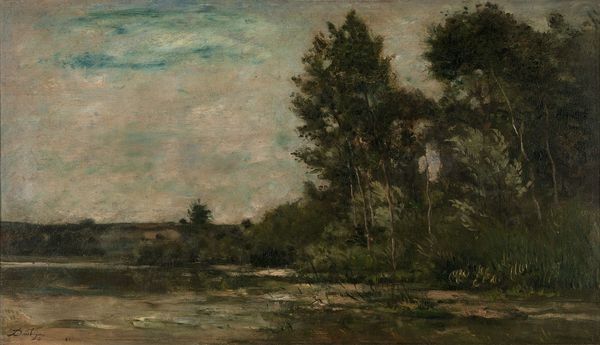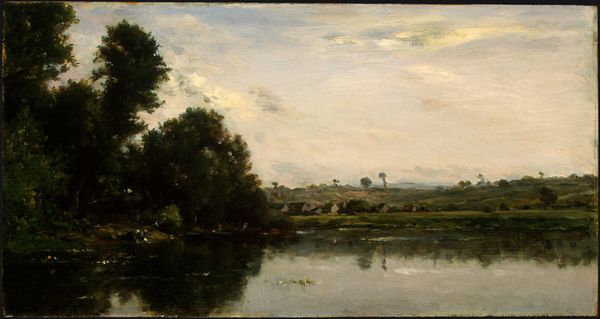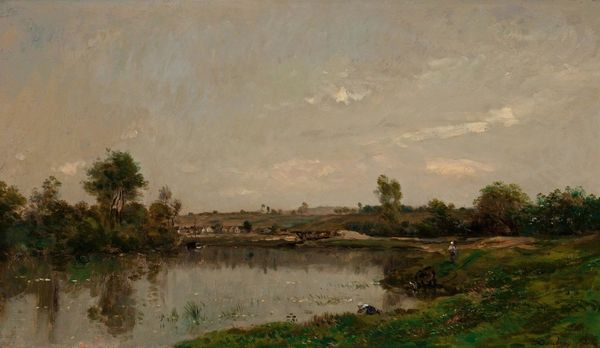
painting, plein-air, oil-paint
#
painting
#
impressionism
#
plein-air
#
oil-paint
#
landscape
#
oil painting
#
watercolor
Dimensions: height 27.2 cm, width 44 cm, depth 9.5 cm, weight 6 kg
Copyright: Rijks Museum: Open Domain
Editor: So this is Willem Roelofs's "Water Meadows on the River IJssel," painted sometime between 1870 and 1897 using oil paint. There's something incredibly still about this scene, almost meditative. What strikes you about this piece? Curator: It's interesting you mention stillness. For me, it's a visual document reflecting a particular moment in the Netherlands' relationship with its landscape, with the rapid industrialization encroaching during that period. Consider the social and political dimensions of land use—who had access, and at what cost to the environment? Does that stillness perhaps hint at a resistance to change, an idealization of rural life against the rising tide of industry? Editor: That's a compelling point. I hadn’t considered the painting as a form of resistance. So, the choice of subject matter, these quiet water meadows, could be seen as a political statement? Curator: Absolutely. Landscapes are never neutral. Who is given space in the landscape, and what activities are rendered visible? Consider how this contrasts with contemporary depictions of urban life. Think of it in terms of class and access too - who benefitted from this idyllic scene and whose labor made it possible? Does this inform how we view the image today? Editor: That gives me a lot to consider. It makes you wonder what the painting excludes, as much as what it includes. Curator: Precisely! And in terms of Roelofs’ process, his adoption of “en plein air” painting is quite striking. His practice exists outside of the establishment’s institutions of power and artistic practice. How might this reflect his worldview? Editor: This has completely transformed my understanding. It’s no longer just a pretty landscape; it’s a commentary on society and the changing world. Thank you. Curator: My pleasure. Always remember to ask, “Whose story is being told, and whose is being left out?” That lens can unlock hidden dimensions in any artwork.
Comments
No comments
Be the first to comment and join the conversation on the ultimate creative platform.
